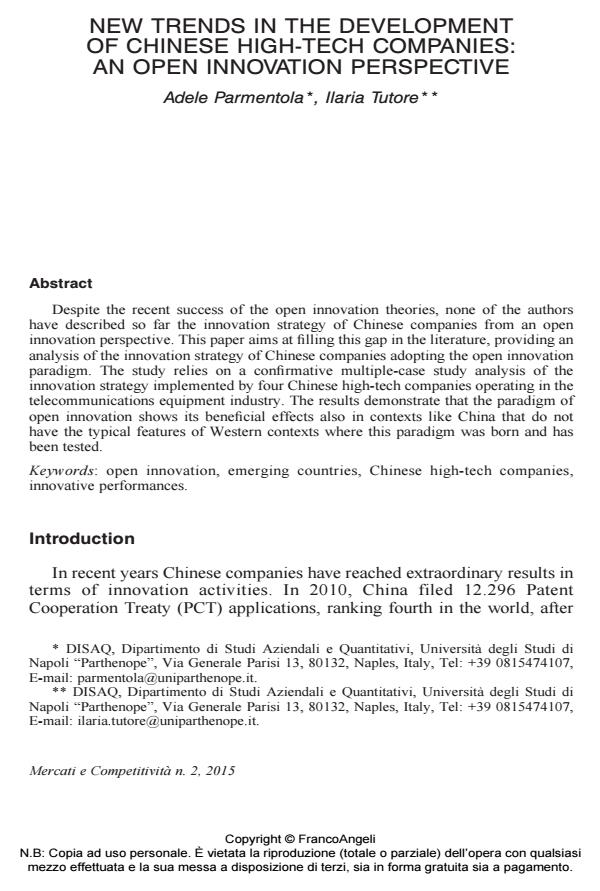New trends in the development of Chinese high-tech companies: an open innovation perspective
Journal title MERCATI E COMPETITIVITÀ
Author/s Adele Parmentola, Ilaria Tutore
Publishing Year 2016 Issue 2016/1
Language English Pages 32 P. 71-102 File size 169 KB
DOI 10.3280/MC2016-001005
DOI is like a bar code for intellectual property: to have more infomation
click here
Below, you can see the article first page
If you want to buy this article in PDF format, you can do it, following the instructions to buy download credits

FrancoAngeli is member of Publishers International Linking Association, Inc (PILA), a not-for-profit association which run the CrossRef service enabling links to and from online scholarly content.
Despite the recent success of the open innovation theories, none of the authors have described so far the innovation strategy of Chinese companies from an open innovation perspective. This paper aims at filling this gap in the literature, providing an analysis of the innovation strategy of Chinese companies adopting the open innovation paradigm. The study relies on a confirmative multiple-case study analysis of the innovation strategy implemented by four Chinese high-tech companies operating in the telecommunications equipment industry. The results demonstrate that the paradigm of open innovation shows its beneficial effects also in contexts like China that do not have the typical features of Western contexts where this paradigm was born and has been tested.
Keywords: Open innovation, emerging countries, Chinese high-tech companies, innovative performances
- OPEN INNOVATION IN COMPLEX ECOSYSTEMS: KNOWLEDGE NETWORKS AND BEYOND Burcu Türkcan, Meltem Ince Yenilmez, in Bilgi Ekonomisi ve Yönetimi Dergisi /2025 pp.131
DOI: 10.54860/beyder.1503811
Adele Parmentola, Ilaria Tutore, New trends in the development of Chinese high-tech companies: an open innovation perspective in "MERCATI E COMPETITIVITÀ" 1/2016, pp 71-102, DOI: 10.3280/MC2016-001005